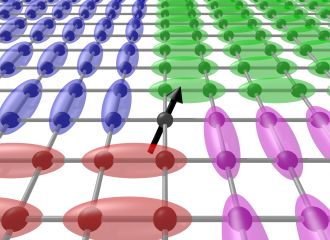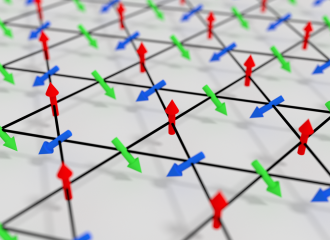Computer and Physics
Since its birth in the middle 20th century, Modern computers has been developed with exponential growth. Algorithms and softwares has been improved in parallel to the hardware developments. Both of these advancement provide us with a completely new tool for sciences.
In our group, we use supercomputers as experimentalists use big experimental equipments for solving various problems in statistical physics, solid state physics, and quantum manybody problems. This style of research is called “computational physics”, as compared to other conventional styles: “theoretical physics” and “experimental physics”. While theorists have been doing both modeling and model calculation, the computational physics is quite powerful for the latter, the model calculation.
Soon after the first modern computer was built, Alder and Weinright demonstrated the existence of a phase transition in a rather simple system consisting of hard spheres with no interaction. While it is not so obvious that only volume-exclusion effect is sufficient for giving rise to a transition, this simulation clearly shows its existence. Another more recent example is a large scale simulation of the universe in its very early stage. Although the basic model (time-evolution equations) was known, it was impossible to solve it by hand (and pen, and paper, etc). Only after the computer simulation, all the details became clear and we can now see it as if the universe evolves just in front of our eyes.

While researchers are trying to solve various problems by computers, they are also interested in the problem of computability itself. The P/NP problem, one of the most famous unsolved problems in modern methematics, may have a profound relation with some of physical problems. For example, it is extremely difficult to simulate obtain the 3-dimensional spin glasses, a typical frustrated system, around and below the spinglass transition temperature. This may be related to the fact that the 3D spin glass ground-state problem is NP hard. In addition, one often encounters so-called “negative sign problem” in computation of quantum manybody problems, such as quantum spin systems. Because of this difficulty, one cannot proceed much further even if the computer speed is increased by a factor of 100 or 1000. However, there are recent activities aiming at applying the most advanced experimental technologies to buiding a computer with a new paradigm, namely, the quantum computer. One of the promising candidate is the system of atoms cooled down by laser beams. In 1990s, such cold atom systems were shown to exhibit a Bose-Einstein condensation.
Computational physics is not only a powerful tool for solving complicated problem, but also a subject of active research. It is connected to some fundamental questions. In our group, we are trying to develop new methods and algorithms while solving various quantum many body problems by using them.


